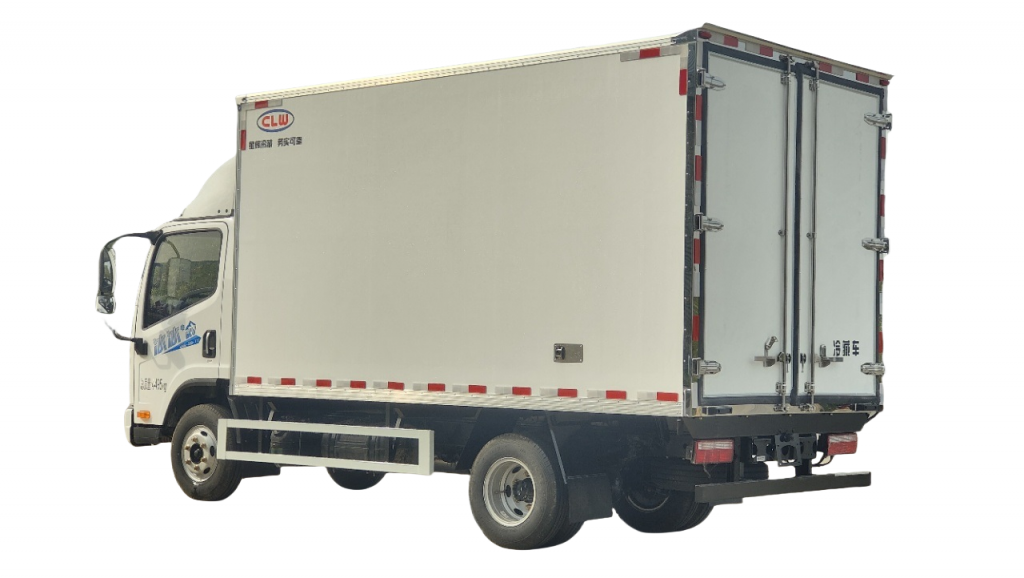Crane Truck Maintenance Schedule Ensuring Safety and Efficiency

Introduction
Crane trucks play a crucial role in various industries, such as construction, logistics, and infrastructure development. These vehicles are designed to lift and transport heavy loads with precision and efficiency. To ensure the safety of operators and workers, as well as the longevity and performance of the crane truck, a comprehensive maintenance schedule must be established and followed diligently. In this article, we will discuss the importance of crane truck maintenance, the key components of a maintenance schedule, and best practices to keep these vehicles in optimal condition.
Importance of Crane Truck Maintenance
Proper maintenance of crane trucks is essential for several reasons. Firstly, regular maintenance helps to ensure the safe operation of the vehicle. Cranes are complex machines that rely on a multitude of components working together seamlessly. Any malfunction or failure of these components can result in accidents, injuries, or even fatalities. By adhering to a maintenance schedule, operators can identify and address potential issues before they escalate into serious problems.
Secondly, maintenance plays a vital role in extending the lifespan of the crane truck. These vehicles are significant investments for companies, and maximizing their longevity is key to achieving a good return on investment. Routine maintenance helps to prevent premature wear and tear, corrosion, and other forms of damage that can reduce the lifespan of the crane truck.
Furthermore, proper maintenance can enhance the efficiency and performance of the crane truck. A well-maintained vehicle operates more smoothly, consumes less fuel, and experiences fewer breakdowns, leading to increased productivity and cost savings for the company. By keeping the crane truck in top condition, operators can ensure that it performs at its best when handling heavy loads and operating in challenging conditions.
Key Components of a Crane Truck Maintenance Schedule
A comprehensive crane truck maintenance schedule should encompass various aspects of the vehicle, including mechanical, electrical, hydraulic, and structural components. Below are some key components that should be included in a maintenance schedule for crane trucks:
1. Daily Inspections: Operators should conduct visual inspections of the crane truck before each use. This includes checking for any visible signs of damage, leaks, loose bolts, or worn components. Daily inspections help to identify immediate issues that need to be addressed before operating the crane truck.
2. Regular Servicing: Crane trucks should undergo regular servicing based on the manufacturer's recommendations or industry standards. This typically includes oil changes, filter replacements, lubrication of moving parts, and other routine maintenance tasks. Servicing intervals may vary depending on the usage and operating conditions of the crane truck.
3. Hydraulic System Maintenance: The hydraulic system is a critical component of a crane truck, responsible for lifting and lowering heavy loads. Regular maintenance of the hydraulic system, including checking fluid levels, inspecting hoses and fittings, and testing the system for leaks or malfunctions, is essential to ensure the safe and efficient operation of the crane truck.
4. Electrical System Checks: The electrical system of a crane truck controls various functions, such as lighting, controls, alarms, and safety features. Regular checks of the electrical system, including testing batteries, inspecting wiring and connections, and verifying the functionality of electronic components, are important for safe operation.
5. Structural Inspections: The structural integrity of a crane truck is crucial for its safe operation. Regular inspections of the crane's boom, chassis, outriggers, and other structural components are necessary to identify any signs of corrosion, fatigue, cracks, or other damage that could compromise the vehicle's stability and safety.
6. Load Testing: Periodic load testing of the crane truck is essential to ensure that it can lift and carry heavy loads within its rated capacity. Load testing helps to verify the performance and safety of the crane's lifting mechanism and ensures compliance with safety standards and regulations.
Best Practices for Crane Truck Maintenance
In addition to following a comprehensive maintenance schedule, there are several best practices that operators and maintenance personnel can adopt to ensure the optimal performance and safety of crane trucks. These practices include:
1. Training and Certification: Operators and maintenance personnel should undergo proper training and certification to operate and maintain crane trucks safely. Water tank truck cleaning procedures should cover equipment operation, safety procedures, maintenance practices, and emergency protocols to ensure that personnel are well-equipped to handle the vehicles effectively.
2. Documentation and Record-Keeping: Maintaining detailed records of maintenance activities, inspections, repairs, and servicing is essential for tracking the condition of the crane truck over time. Documentation helps to identify trends, predict potential issues, and demonstrate compliance with regulatory requirements.
3. Use of Genuine Parts: When replacing components or performing repairs on a crane truck, it is important to use genuine parts recommended by the manufacturer. Genuine parts are designed to meet the specifications and quality standards of the vehicle, ensuring optimal performance and reliability.
4. Environmental Considerations: Crane trucks are often operated in challenging environmental conditions, such as extreme temperatures, dust, humidity, and corrosive agents. Operators should take into account these factors when establishing a maintenance schedule and implementing preventive measures to protect the vehicle from environmental damage.

5. Regular Training and Updates: Technology and regulations in the crane truck industry are constantly evolving. Operators and maintenance personnel should stay informed about the latest developments, best practices, and safety standards through regular training and updates to ensure that they are up to date with current industry practices.
Conclusion
Crane trucks are indispensable tools in various industries, and their safe and efficient operation relies on regular maintenance and upkeep. By establishing a comprehensive maintenance schedule that covers all key components of the vehicle, operators can ensure the longevity, performance, and safety of crane trucks. Adopting best practices, such as training, documentation, and environmental considerations, can further enhance the effectiveness of maintenance efforts. Ultimately, a well-maintained crane truck not only improves safety and efficiency but also maximizes the return on investment for companies relying on these vehicles for their operations.
